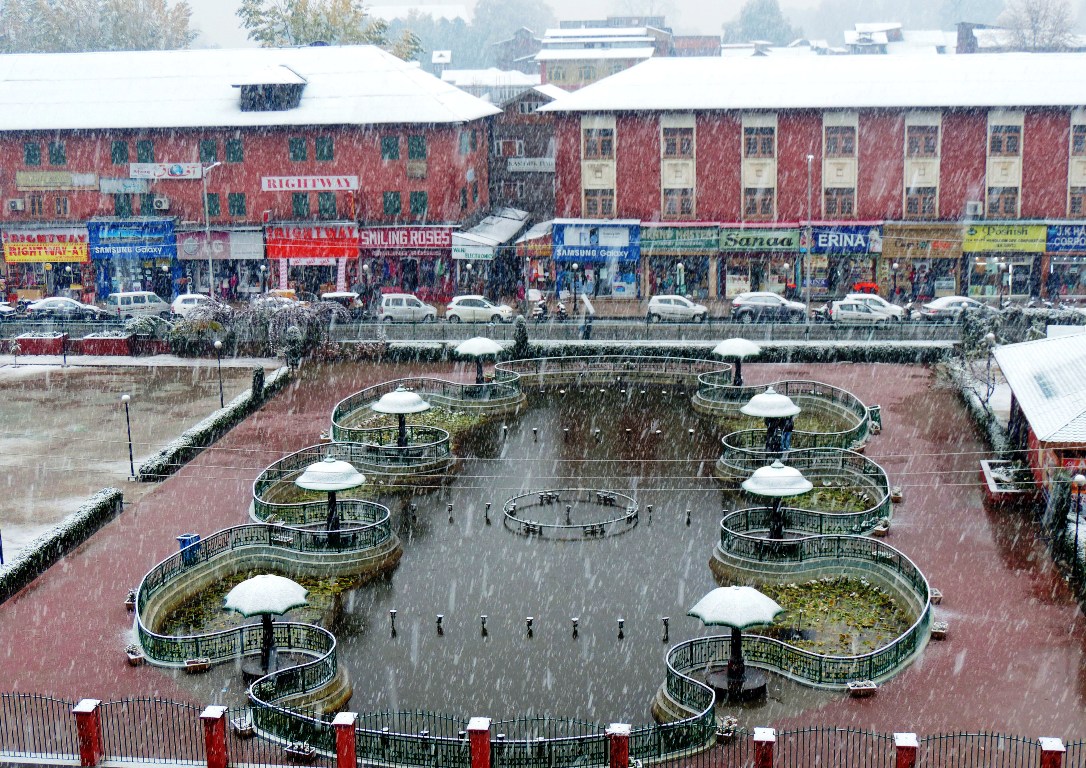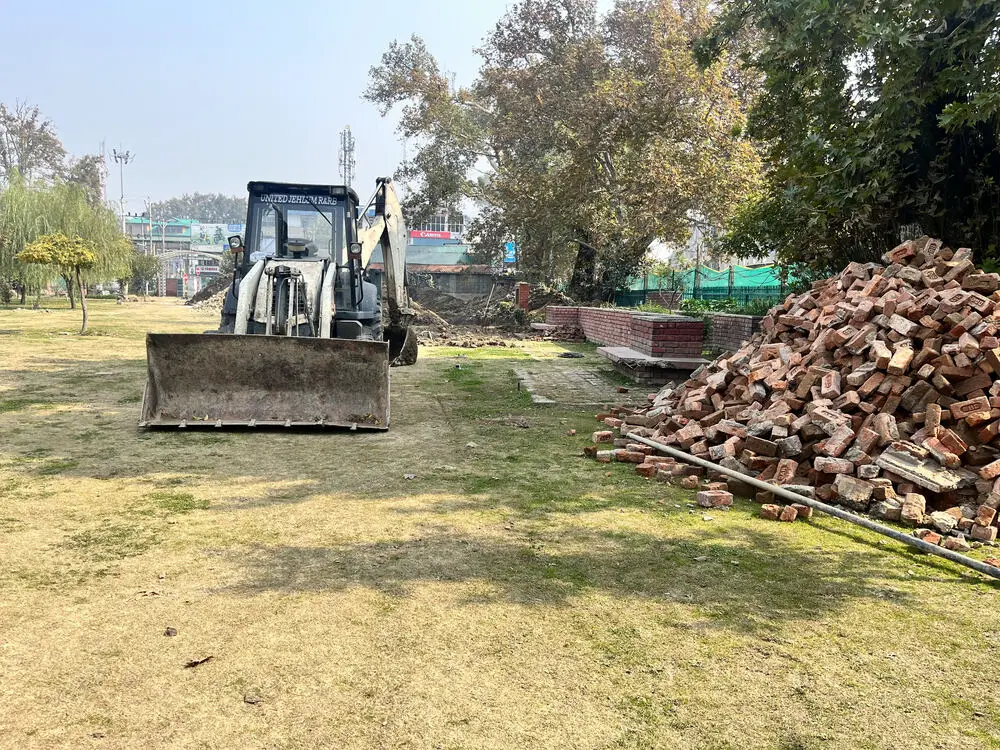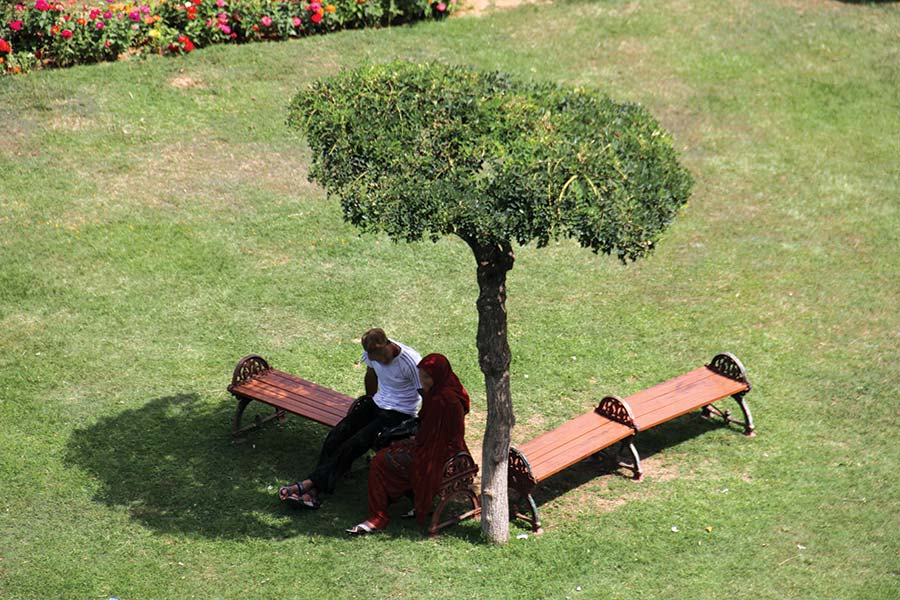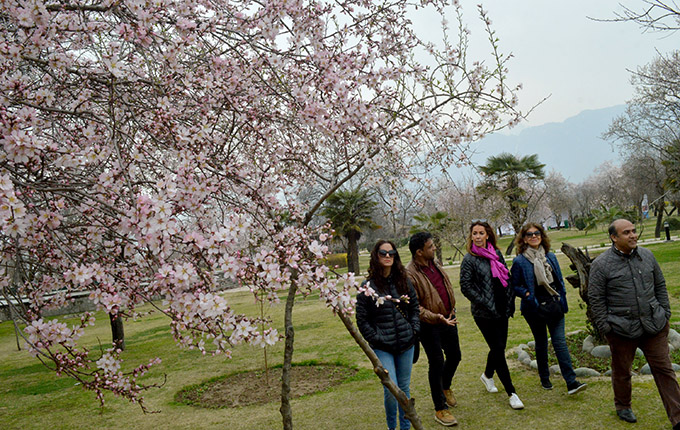A tourist hub and home to nearly 2.5 million people, Srinagar is breathing pollution and lacks adequate green space to repair its lungs, Raashid Andrabi reports

Animals alone do not breathe. Plants breathe and to a large extent, even the cities require breathing. This is perhaps why the new urban planning encouraged by world bodies including the United Nations emphasises an adequate proportion between the housing infrastructure and the green space.
Interestingly, Srinagar is dwindling on the negative side of the green axis. With only 169 parks covering 287 hectares, the city falls 50 per cent short of the 570 hectares recommended by the 2015 Urban and Regional Development Plans Formulation and Implementation (URDPFI) guidelines.
Contrary to the World Health Organisation’s (WHO) standard of nine square meters of open space per resident, Srinagar provides just 2.6 square meters. The global basic in urban planning is that every resident must live within a 15-minute walk of an open space.
A Vanishing Oasis
Nestled in Srinagar’s busy Lal Chowk area, Partap Park has long been the last bastion of greenery in the city centre. Amid rapid urbanisation, this lush is now being redone.
Officially renamed New Kashmir Park, this green oasis of Lal Chowk’s urban chaos has long been a beloved refuge for locals and tourists alike. The administration hopes the renamed park will embody the spirit of Naya Kashmir representing a progressive future.

At 33 kanals (0.69 km) long, one-third of Partap Park is expected to be transformed from a green oasis to a concrete structure to host the Balidaan Stambh, a memorial to remember the security personnel who have fallen in the line of duty in Kashmir.
In August 2022, Home Minister Amit Shah after concluding his high-profile visit to Jammu and Kashmir laid the foundation stone for the memorial at Partap Park. The Balidaan Stambh will be constructed as part of the Srinagar Smart City project. It will occupy a slice of the park.
The redoing of the park, many believe will reduce the green space of the city.
“There was a time when the verdant stretches extended from Polo View to Hotel Lala Rukh. Now only concrete remains,” a historian said. “Are we jeopardizing our very lungs?” He said the Polo Ground which was a huge green space has already been compromised by getting a number of buildings constructed in the space.
For some, the redoing of the park may be an intervention in the history of Dogra heritage. The park named after Maharaja Partap Singh was exclusively for the use of women and has been in operation since 1848.
For most of the nineteenth century, the Dalgate – Maisuma – Batamaloo belt was a fame Poplar Avenue and a tourist attraction. It was a long race course. Most of the constructions started in the latter part of the century but on Residency Road. In the twentieth century, it became the Hotel Road as the Nedous Hotel, the first Kashmir Hotel, emerged on it. The rest of the changes came after 1947.
Interestingly, the park is being redone for the third time since 2015. After the 2014 devastating floods, the top FMCG Company known for Cigarette making, Godfrey Phillips India Ltd joined hands with the local NGO, Help Foundation, and repaired the key park under its Corporate Social Responsibility (CSR) programme. It was finally thrown open on June 19, 2016. Officials said it cost the company Rs 1.2 crore.
In 2021, the government made another intervention in its fountains area.
The Green Space Battles
In May 2016, former Bihar Chief Justice Bilal Nazki highlighted shrinking green spaces in a letter treated as a Public Interest Litigation by the Jammu and Kashmir Chief Justice. The High Court directed the government to consider Nazki’s letter. His letter mentioned various parks the government itself had practically converted into buildings in Srinagar city.

These include Usman Zanana Park, now the civil secretariat; part of Badamwari, now a government housing colony; and sections of Naseem Bagh and Polo Ground converted into university blocks, a nursery and a taxi stand. Other parks like Lal Mandi, Iqbal Park and more have been considerably reduced over the years, his letter said.
Historical Perspective
Kashmir has always been referred to as the earthly Heaven. Since Mughal times, it served as a summer retreat for rulers. Apart from the cool climate then (not as cool now), its main attraction was abundant greenery.
Understanding its worth, the Mughals actually gave Kashmir a huge network of gardens and parks. These included the world-famous gardens of Nishat, Shalimar and Chashmashahi in Srinagar. Bagh-e-Dilawar Khan was an exclusive park where high-profile Western visitors would live. They also preserved and added to the Sheikh Bagh, Sonwar Bagh, Ram Bagh and other areas.
Not many parks or gardens were added by the subsequent rulers. Afghans made a bit unlike the Sikhs and Dogras. Without these historical gardens, Srinagar would have nothing noteworthy for tourists except the much-touted Tulip Garden, claimed to be Asia’s largest, which was laid by Ghulam Nabi Azad in 2008. There have been no worthwhile additions to parks of such grandeur.
Interestingly while most of these gardens are on the margins of the city, the main city lacks open spaces. Unlike the uptown, the downtown lacks any space of significance especially in the congested belt between Hawal and Khanyar.
Air Pollution
Over the past two decades, Srinagar has seen a notable decline in green open areas. This transformation unleashed a surge in air pollution. According to a Jammu and Kashmir Urban Development Department report, many housing settlements sprang up while the government failed to establish even one new park in 20 years.
This green space scarcity reduced the city’s per capita green space coverage to just 4.5 square meters currently. The adverse effects appear in Srinagar’s poor Air Quality Index (AQI).
In 2022, SKIMS Director Dr Parvaiz Koul revealed air pollution causes 10,000 deaths annually in Jammu and Kashmir. He said particulate matter 2.5 (PM 2.5) exposure causes these deaths, so controlling it is critical. Kashmir’s air quality has gradually worsened, especially in winter. In recent days, AQI shot from moderate to severe, necessitating urgent intervention.
Unrealistic Plans?
Compared to other crowded cities in the mainland, Srinagar’s green space shortfall becomes more apparent. The WHO recommends a minimum of nine square meters of organised green space per inhabitant. Cities like Varanasi, Chandigarh, Jaipur, Bhopal, Allahabad, Noida, and even New Delhi surpass this standard. In contrast, Srinagar has just 2.6 square meters.
The WHO also suggests creating green area networks so all residents live within a 15-minute walk of open space. This appears difficult for Srinagar presently.
The 2017 State Annual Action Plan under the Atal Mission for Rejuvenation and Urban Transformation scheme shows the Jammu and Kashmir government plans to marginally increase Srinagar’s per capita green space coverage to 4.5 square meters by 2020. This encompasses developing four spaces – parks along the Jhelum riverbanks, Green Park at Harwan, Tulip Garden, and a park along Nishat Bund.

Government’s Lack of Progress
The Court ordered lawyer Faisal Qadri to inspect 11 parks and report back. Post review, on the basis of his report, the Court noted no substantial action to increase green space. It asked the government to explain the expenditure of Rs 64 lakhs for park development when their condition remains unchanged.
An official at the Directorate of Floriculture acknowledged being aware of developing Srinagar’s green spaces. “We have 30 parks spread over 4,032 kanals in Srinagar, and 265 kanals of lawns, but increasing these remains an open question.”
Once renowned for its Mughal Gardens, Srinagar now lacks well-maintained green spaces. The Core City in particular lacks natural vegetation and appears desolate. Once lush forests like Zabarwan hills and others have become barren hillocks despite settlement growth at their foothills. Neglect and apathy have already condemned historic gardens like Dewan Bagh and others to history.
Partap Park’s decline has unfolded gradually over the years. What once brought residents respite now exemplifies haphazard urbanisation.

Hope for Change
Srinagar’s green space shortage has concerned many for years. In 2018, the Urban Development Department devised an initial action plan to expand organised green spaces in Srinagar. The goal was to establish 860 parks between 2015 and 2035.
However, given Srinagar’s current state, this plan seems unrealistic. The Srinagar Smart City project remains silent on expanding green coverage. The Draft Master Plan envisions constructing only four parks.
The post Srinagar’s Shrinking Green Space appeared first on Kashmir Life.
from Kashmir Life https://ift.tt/9h7oTHb
via IFTTThttps://ift.tt/uM7P03i
No comments:
Post a Comment